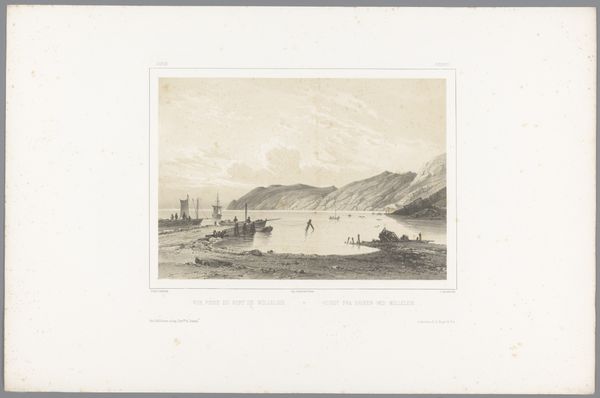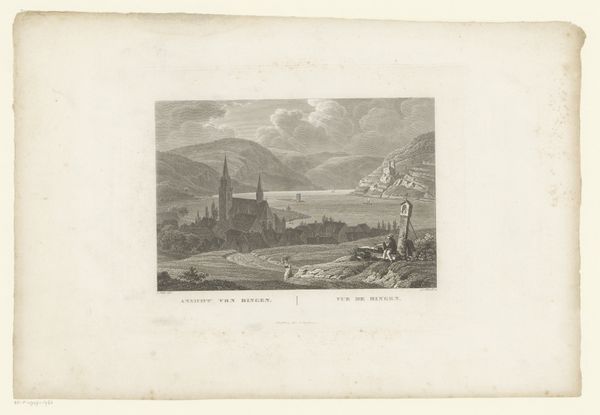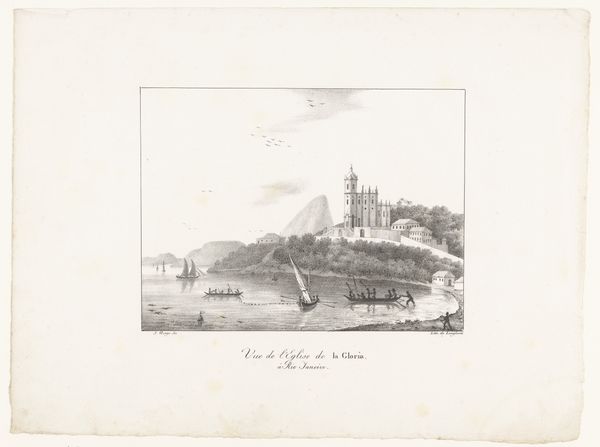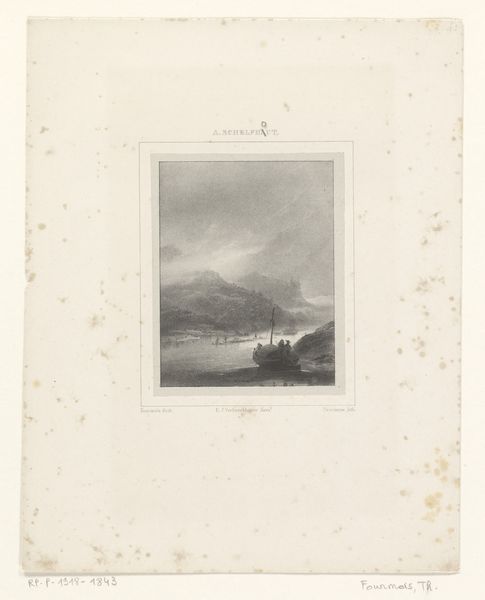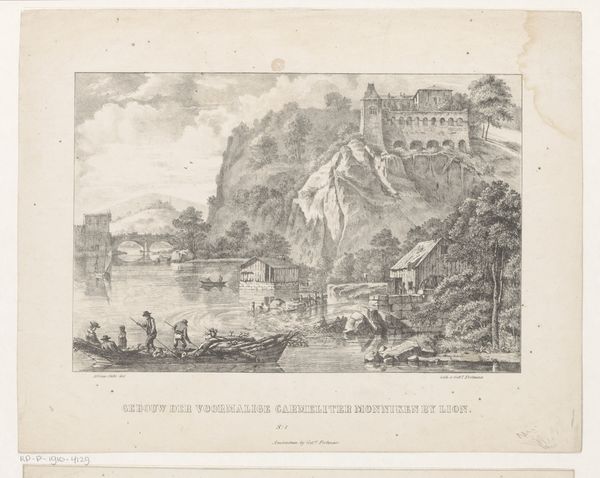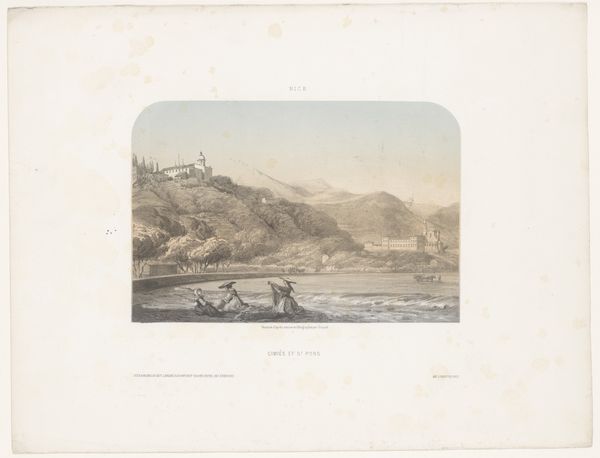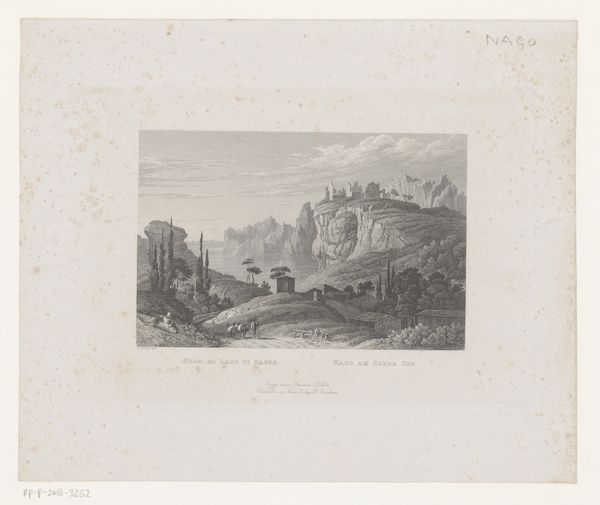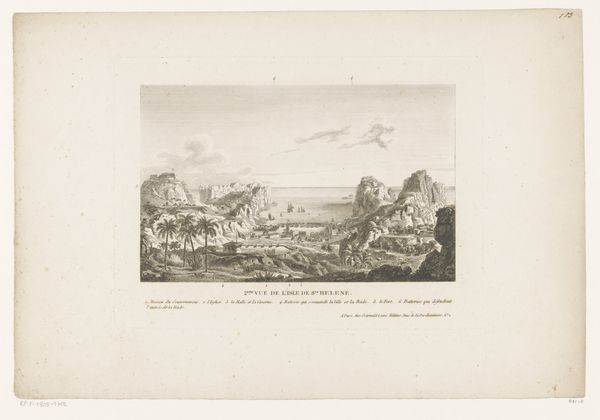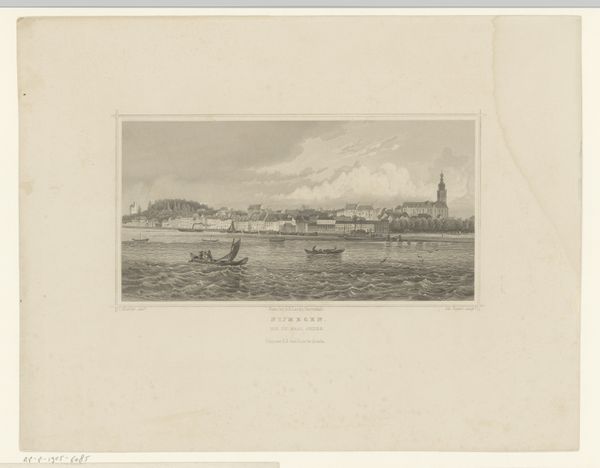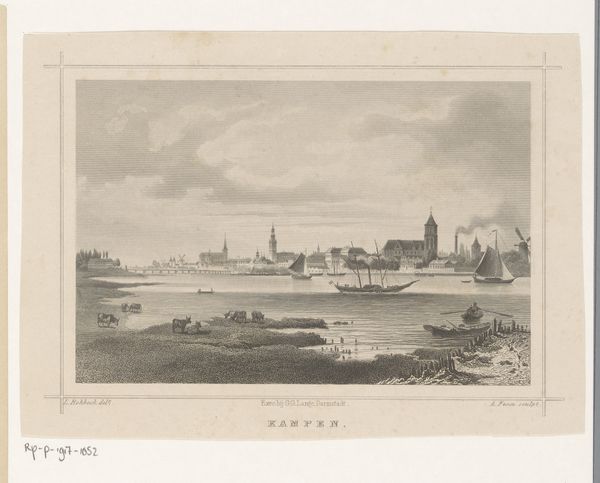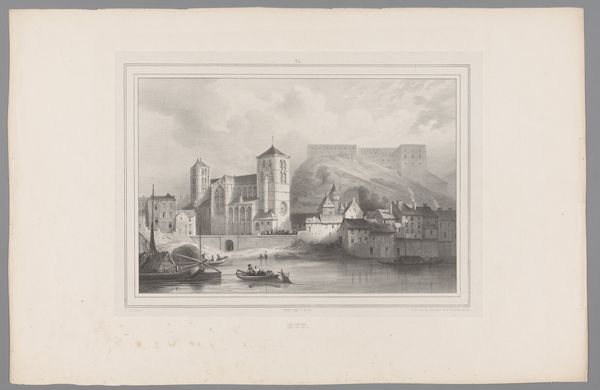
print, engraving
# print
#
old engraving style
#
landscape
#
archive photography
#
historical photography
#
romanticism
#
cityscape
#
history-painting
#
engraving
#
realism
Dimensions: height 295 mm, width 220 mm
Copyright: Rijks Museum: Open Domain
Curator: Eugène Cicéri created this engraving, "Zicht op de haven van Marseille," around 1840. It depicts the harbor of Marseille, now held at the Rijksmuseum. Editor: My first impression is one of subdued activity. It feels meticulously crafted; you can almost hear the lapping of the water and the faint sounds of the bustling port. The detail is remarkable for an engraving. Curator: The precision in the engraving speaks to the artist's meticulous technique and a romanticized portrayal of industrial progress. But who exactly was afforded this ideal and to what ends? It also reflects France's colonial ambitions. Marseille was a major port connecting France to its North African colonies. Editor: Exactly, you can see this history embedded within its lines—the smoke billowing in the distance suggesting industry. This was also a product created to circulate among elite society as part of 'Salon de 1840'. One has to consider the physical work itself. It is amazing, all of these marks made into this copper plate so as to render a single image, capable of reproducing it over and over. What was Ciceri trying to express using only line to communicate this vision? Curator: Well, it serves as more than just documentation; the picturesque composition and detailed rendering certainly elevate the scene to romantic ideals of human activity. You get a strong sense of that ambition of the French Empire here. Also, think about access: prints like these made views accessible to people far removed from them by class and geography, helping to reinforce a shared understanding. The work also depicts the city's relationship with the sea, both central to France's narrative of expansion. Editor: Precisely. How are the stories of marginalized port workers interwoven here? And looking again at Ciceri’s tools: What presses did he use, how did he produce his printing plates? There are multiple histories embedded in the art’s making that must be researched to contextualize it in full. The act of translating a three-dimensional reality into a two-dimensional print is incredibly labor intensive and deserving of consideration when studying Ciceri’s harbor view. Curator: Indeed, examining how the narrative is framed offers insight into Cicéri and his milieu. Editor: Analyzing materials and production gives this romantic ideal more depth, layering social complexities around maritime activities.
Comments
No comments
Be the first to comment and join the conversation on the ultimate creative platform.
